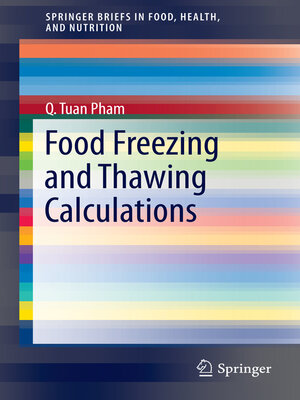Food Freezing and Thawing Calculations
ebook ∣ SpringerBriefs in Food, Health, and Nutrition
By Q. Tuan Pham

Sign up to save your library
With an OverDrive account, you can save your favorite libraries for at-a-glance information about availability. Find out more about OverDrive accounts.
Find this title in Libby, the library reading app by OverDrive.



Search for a digital library with this title
Title found at these libraries:
| Loading... |
Freezing time and freezing heat load are the two most important factors determining the economics of food freezers. This Brief will review and describe the principal methods available for their calculation. The methods can be classified into analytical methods, which rely on making physical simplifications to be able to derive exact solutions; empirical methods, which use regression techniques to derive simplified equations from experimental data or numerical calculations and numerical methods, which use computational techniques such as finite elements analysis to solve the complete set of equations describing the physical process. The Brief will evaluate the methods against experimental data and develop guidelines on the choice of method. Whatever technique is used, the accuracy of the results depends crucially on the input parameters such as the heat transfer coefficient and the product's thermal properties. In addition, the estimation methods and data for these parameters will be reviewed and their impacts on the calculations will be evaluated. Freezing is often accompanied by mass transfer (moisture loss, solute absorption), super cooling and nucleation and may take place under high pressure conditions; therefore methods to take these phenomena into account will also be reviewed.






